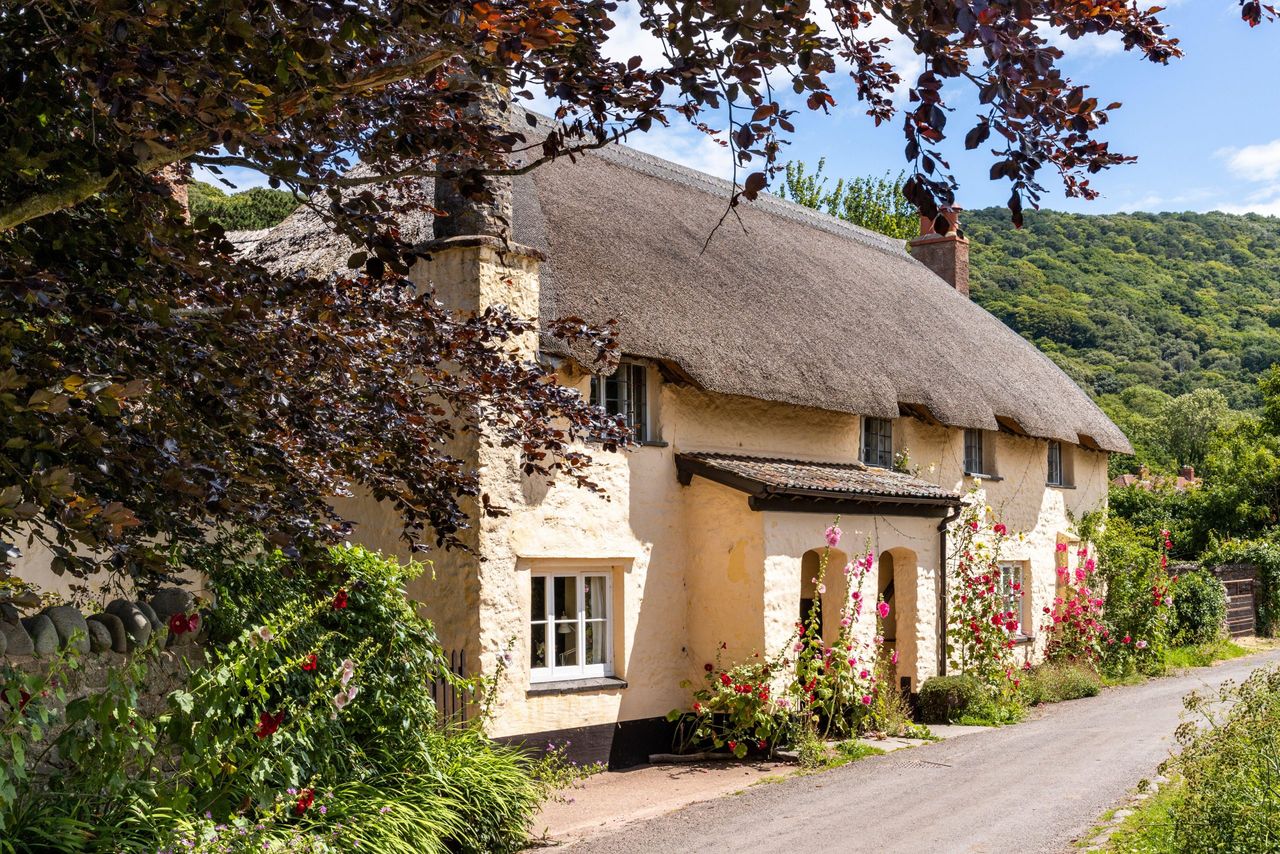The price gap between city and country is closing — but is there more to it than WFH culture and the search for work/life balance?
The working from home culture has undoubtedly shaken and changed how and where we're buying houses, as the most recent ONS figures show. But there may be more to the phenomenon than just that, as Lydia Stangroom and Toby Keel report.


Without running the risk of opening a (very large) can of worms, I think we can all agree that there's been, er, just a bit of uncertainty over the past couple of years.
The 'B' word and the 'C' word amongst other factors (ever-changing social distancing rules, driver shortages, the whole fuel debacle) have meant our daily news bulletins have taken us on some wild rides. I can't be the only one who feels the slight pang of PTSD from my news notification app every time there's breaking news — no matter how exciting or mundane.
Throughout the last 18 months — and running alongside our new-found love for elasticated waistbands, daily walks and subscriptions to streaming services — has been the rise and rise of house prices which have sky rocketed throughout the pandemic, with buyers looking to move for lifestyle reasons in the ongoing quest for a better work/life balance. Outdoor space was (and continues to be) at a premium and many people chose to prise themselves away from the bright lights of cities in favour of more rural abodes.
Latest numbers from the Office of National Statistics bear this out, with the ONS House Price Index for August showing how house price growth has been significantly faster in areas away from London.
Scotland tops the list with 16.9% house price growth in the year to the end of August 2021, while the North East (13.3%), North West (12.4%) and Wales (12.5%) all seeing far greater price rises than the UK average of 10.6%. Prices have still been rising in London, but more slowly: 7.5% in the capital and 8.9% in the south-east.
That latter figure could be deceptive, though: we'll need to wait for more granular data to see if the farthest-flung reaches of Kent, Sussex and Essex have seen bigger gains than the Sevenoakses and St Albanses of the world. The same can probably be said of the figures for the East Midlands (10.3%) and Yorkshire & Humber (8.8%) which both take in large urban areas as well as relatively rural towns and villages.
| Row Labels | Aug-20 | Aug-21 | Annual % growth | Annual £ growth | Median full-time earnings 2020 | House price growth as % of gross earnings |
| London | £489,424 | £525,893 | 7.5% | £36,469 | £38,592 | 94% |
| East of England | £296,143 | £324,510 | 9.6% | £28,367 | £32,944 | 86% |
| South East | £329,417 | £358,070 | 8.7% | £28,653 | £34,219 | 84% |
| Scotland | £154,707 | £180,832 | 16.9% | £26,125 | £31,836 | 82% |
| Great Britain | £241,729 | £267,504 | 10.7% | £25,775 | £31,596 | 82% |
| United Kingdom | £238,998 | £264,244 | 10.6% | £25,246 | £31,461 | 80% |
| England and Wales | £251,168 | £276,180 | 10.0% | £25,012 | £31,580 | 79% |
| England | £255,802 | £280,921 | 9.8% | £25,119 | £31,766 | 79% |
| South West | £265,158 | £288,658 | 8.9% | £23,500 | £30,039 | 78% |
| West Midlands Region | £205,908 | £228,593 | 11.0% | £22,685 | £29,481 | 77% |
| Wales | £172,999 | £194,575 | 12.5% | £21,576 | £28,273 | 76% |
| North West | £173,316 | £194,821 | 12.4% | £21,505 | £29,700 | 72% |
| East Midlands | £200,918 | £221,693 | 10.3% | £20,775 | £29,430 | 71% |
| North East | £131,543 | £149,042 | 13.3% | £17,498 | £27,971 | 63% |
| Yorkshire & Humber | £171,000 | £185,968 | 8.8% | £14,968 | £28,800 | 52% |
| Northern Ireland | £143,723 | £153,449 | 6.8% | £9,726 | £28,342 | 34% |
There's more to the varying price rises than just a desire to head to the country, however, as pointed out by Lawrence Bowles, a senior research analyst at Savills.
Sign up for the Country Life Newsletter
Exquisite houses, the beauty of Nature, and how to get the most from your life, straight to your inbox.
Boles cheerfully concedes that the usual factors cited — stock shortages, the stamp duty holiday and 'continued demand' from buyers looking to move for 'a host of lifestyle reasons' — are all factors contributing to the rise.
Yet he adds that the annual absolute pounds-and-pence rise in the price of property has a major part to play. The average house price in London rose by £36,469, more than any other part of the country, the fastest price growth that the capital has seen since 2016 — which was, lest we forget, the moment at which the Brexit vote turned the market upside down.
Terrifyingly for would-be first-time buyers, the London 2020-2021 increase alone is the equivalent of adding another annual salary multiple on top of the cost of the home. The average house in London now costs £525,000, which is more than 13 times the median annual salary in the capital. Considering that mortgages are generally capped at five times earnings, it's a wonder that anyone can afford a house at all; it also makes you wonder about the level of income inequality in London today, for these numbers to be what they are.
In the light of all that, the obvious question is 'when will it end?' Well, Boles suggests that we might already be hitting that point. As he puts it, the research 'reinforces our view that affordability and access to mortgage finance will moderate price growth in London and the south over the next five years, while we expect faster growth in the North.' It's not so much that demand is dropping, in other words; London housing seems to be pushing its way to the very limit of affordability.
One thing is certain: the national appetite for buying property shows little sign of drying up. As ever, that will mean good news for downsizers, bad news for first-time buyers, and good times continuing to roll for estate agents near and far.

Credit: Strutt and Parker
Best country houses for sale this week
An irresistible West Country cottage and a magnificent Cumbrian country house make our pick of the finest country houses for
Country Life is unlike any other magazine: the only glossy weekly on the newsstand and the only magazine that has been guest-edited by HRH The King not once, but twice. It is a celebration of modern rural life and all its diverse joys and pleasures — that was first published in Queen Victoria's Diamond Jubilee year. Our eclectic mixture of witty and informative content — from the most up-to-date property news and commentary and a coveted glimpse inside some of the UK's best houses and gardens, to gardening, the arts and interior design, written by experts in their field — still cannot be found in print or online, anywhere else.
-
 Dawn Chorus: How to listen to The King's new playlist, Spike Milligan's wonky house and Burgh Island
Dawn Chorus: How to listen to The King's new playlist, Spike Milligan's wonky house and Burgh IslandMonday morning's Dawn Chorus round-up finds presidential inspiration, a comedic home and more.
By Toby Keel Published
-
 If the Volvo ES90 is the answer, what is the question?
If the Volvo ES90 is the answer, what is the question?Volvo's latest luxury saloon car impresses in unexciting ways, with an unwavering commitment to safety and comfort.
By James Fisher Published
